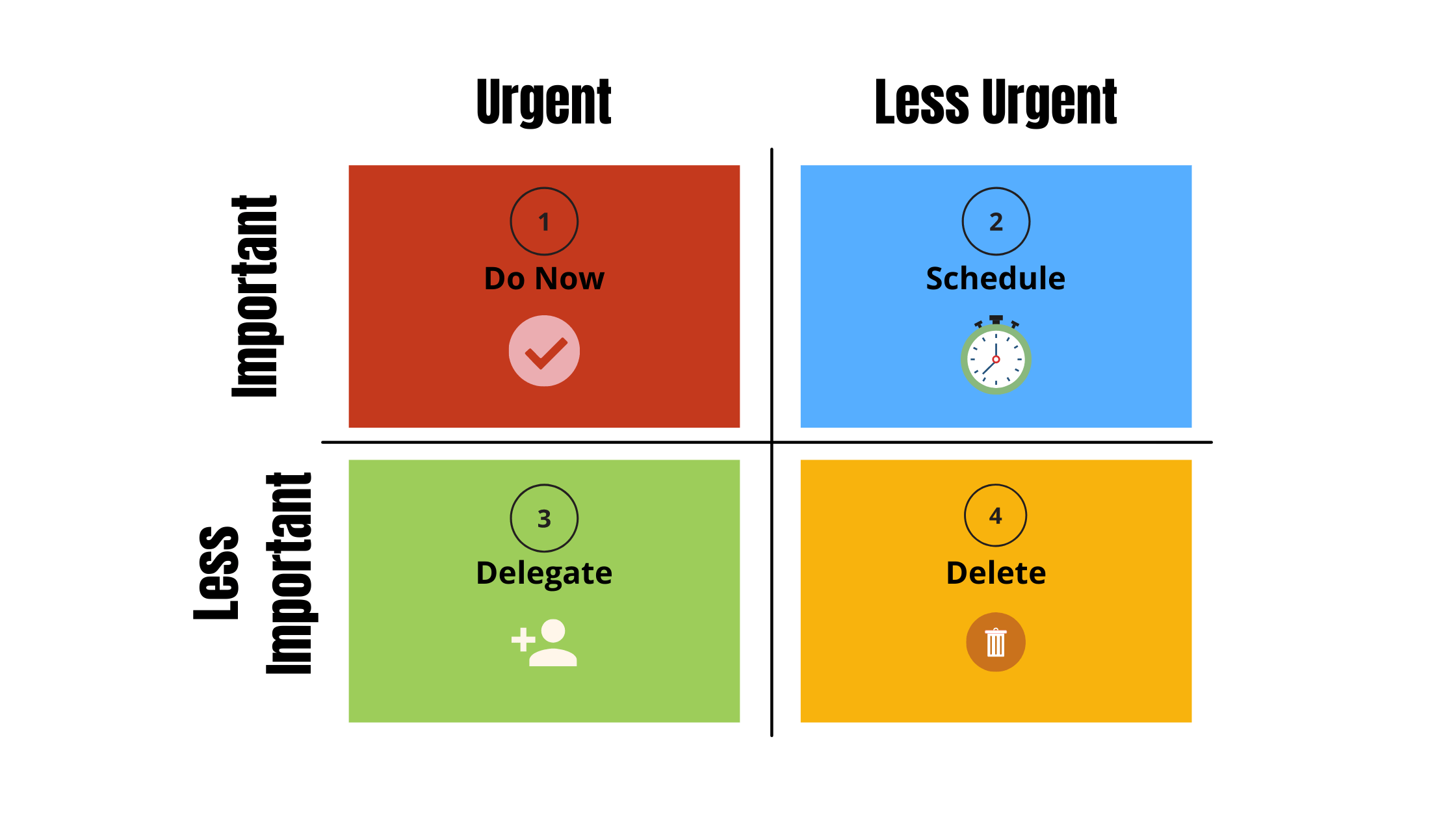Introduction
Content creation is a vital component of modern business strategies, but managing it effectively can be challenging. Many businesses grapple with the decision of whether to outsource their content creation needs or handle them in-house. That's where the Eisenhower Matrix comes into play.
In this blog post, we will explore how the Eisenhower Matrix can assist businesses in making informed decisions about outsourcing content creation tasks to a video production service. By carefully evaluating the urgency and importance of these tasks, businesses can optimise their resources and achieve content creation success.
Understanding the Eisenhower Matrix
The Eisenhower Matrix is a decision-making tool that helps businesses prioritise tasks based on urgency and importance. It is divided into four quadrants. We will apply the logic to using a video production service but this can be used with anything tied to your business.
UNDERSTANDING EACH QUADRANT
Urgent and Important: Focus on Core Competencies (DO NOW)
Tasks in this quadrant require immediate attention and have significant consequences if not addressed promptly. They are top priorities that should be tackled as soon as possible.
Urgent but Less Important: Streamline Operations (Delegate - Who can do it for you?)
Tasks in this quadrant seem urgent, but they do not align with your long-term goals or contribute to your priorities. Delegate or automate these tasks whenever possible to free up time for more important activities.
Important but Less Urgent: Long-Term Strategy (SCHEDULE A TIME TO DO IT)
Tasks in this quadrant are significant but do not have pressing deadlines. They contribute to long-term goals, personal growth, and strategic planning. It is important to schedule time for these tasks to prevent them from becoming urgent in the future.
Not Urgent and Not Important: Minimise Distractions (Delete/ Eliminate / Remove)
Tasks in this quadrant are neither urgent nor important. They often involve distractions, time-wasting activities, or irrelevant tasks. It is best to eliminate or minimise these tasks to focus on what truly matters.
WHAT NOW?
What do i do once i understand which quadrant the task is assigned to?
When deciding whether to do a task in-house or outsource it to a video production company, businesses need to consider several factors:
Expertise and Skills
Evaluate the level of expertise and skills required for the task. If it demands specialised knowledge, equipment, or technical capabilities that your team lacks, outsourcing to a video production company with the necessary expertise can ensure high-quality results.
Cost Analysis
Conduct a cost analysis to compare the expenses of performing the task in-house versus outsourcing. Consider factors such as equipment costs, hiring and training expenses, overhead costs, and potential cost savings from outsourcing.
Time and Resources
Assess the availability of your internal resources, including time and manpower. Determine if your team can handle the task efficiently without sacrificing other critical responsibilities. Outsourcing can free up your team's time and allow them to focus on core activities.
Scalability and Flexibility
Consider the scalability and flexibility required for the task. If the workload fluctuates or if you have a short-term project, outsourcing to a video production company provides the advantage of accessing additional resources when needed and scaling up or down as required.
Quality and Consistency
Evaluate the desired quality and consistency of the output. Video production companies specialise in their field and have experience in delivering professional, polished content. Outsourcing ensures consistent quality and adherence to industry standards.
Creative Input and Expertise
Consider the value of creative input and strategic guidance that a video production company can offer. They can provide fresh perspectives, innovative ideas, and creative storytelling techniques to elevate your content and engage your target audience effectively.
Time-to-Market
Assess the urgency and time-to-market requirements of the task. Video production companies often have streamlined workflows and can deliver projects within tight deadlines, helping you meet your time-sensitive objectives.
Long-Term Strategy
Align your decision with your long-term business strategy. Evaluate whether outsourcing content creation aligns with your growth plans, allows you to leverage specialised expertise, and helps you stay ahead of the competition.
By considering these factors, businesses can make an informed decision on whether to perform a task in-house or outsource it to a video production company, ensuring optimal use of resources and achieving desired outcomes efficiently.
Conclusion
The Eisenhower Matrix offers a strategic framework for businesses to assess their content creation needs and determine which tasks can be efficiently outsourced to a video production service. By evaluating the urgency and importance of each task, businesses can make informed decisions, focusing on their core competencies while leveraging the expertise of video production services. This approach ensures efficient content creation, aligns with long-term strategies, streamlines operations, and minimises distractions. By applying the Eisenhower Matrix, businesses can optimise their content creation processes and achieve greater success in their marketing endeavors.
Further Info
If you are unsure on content creation needs and you don’t know how to assess if a task can be done in house or with a video production service, we have other blogs that go into various aspects of the video production life cycle that may help.









